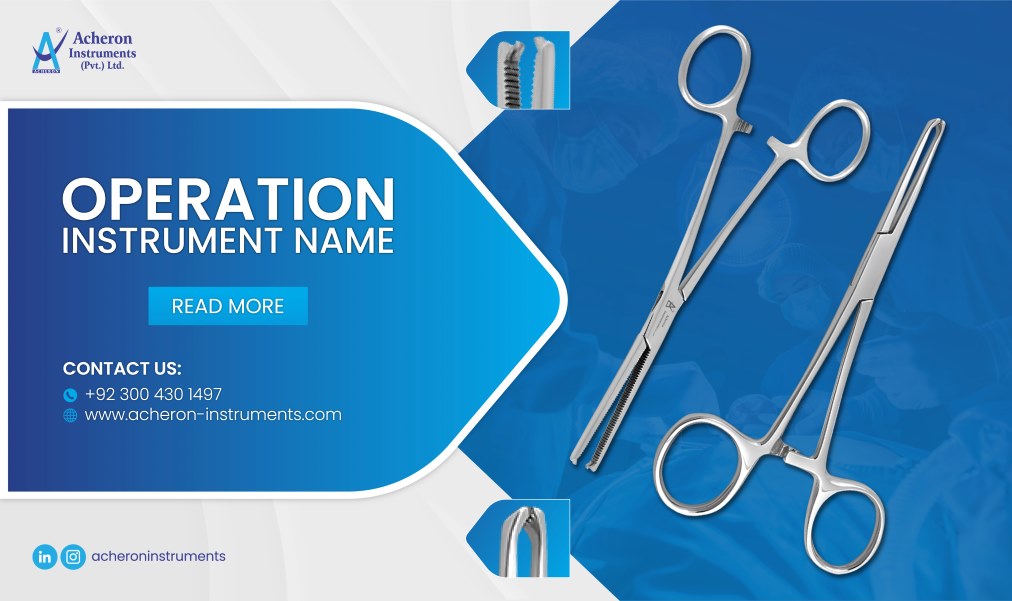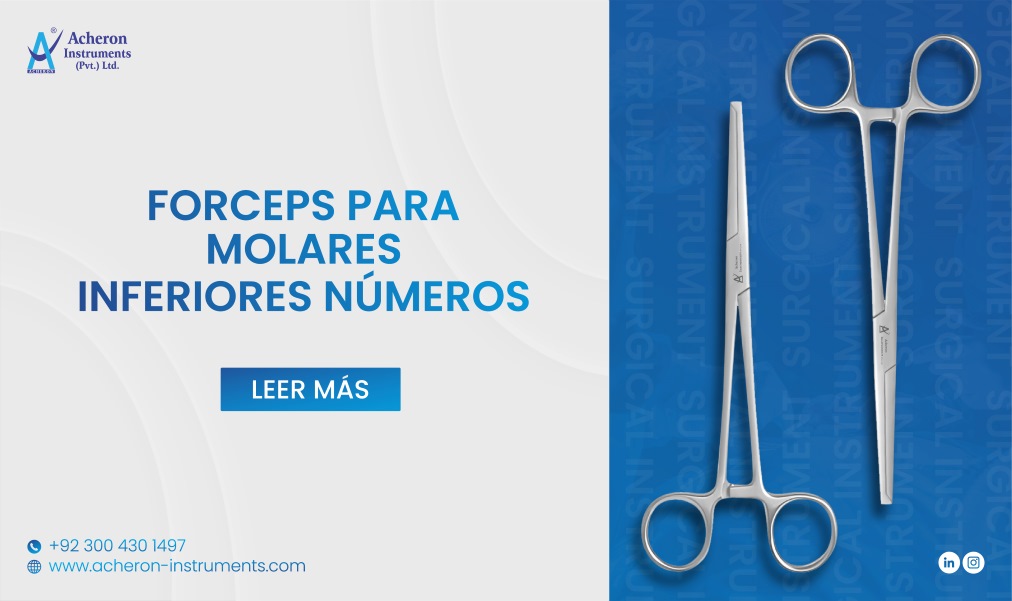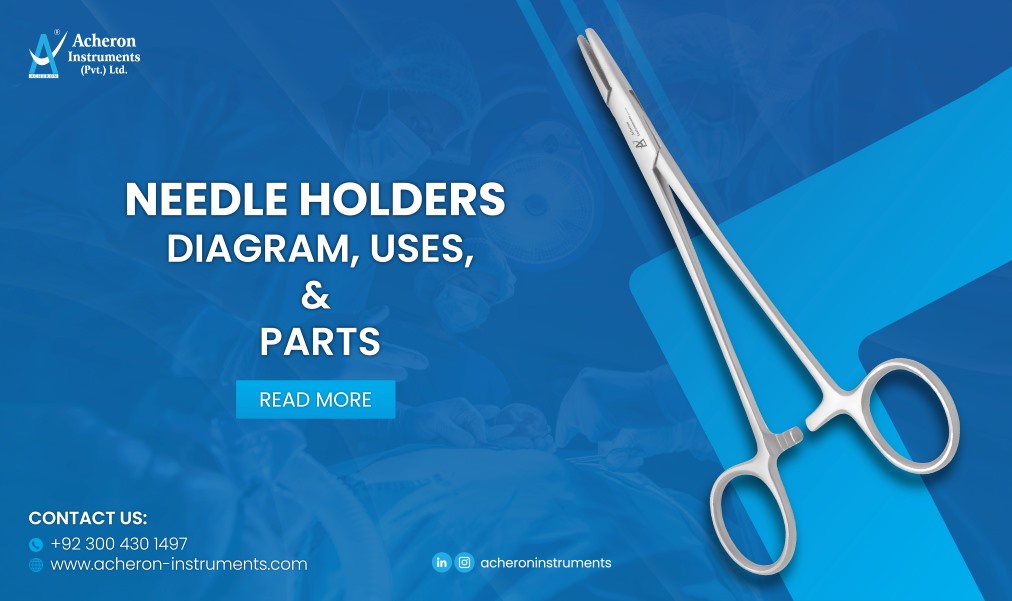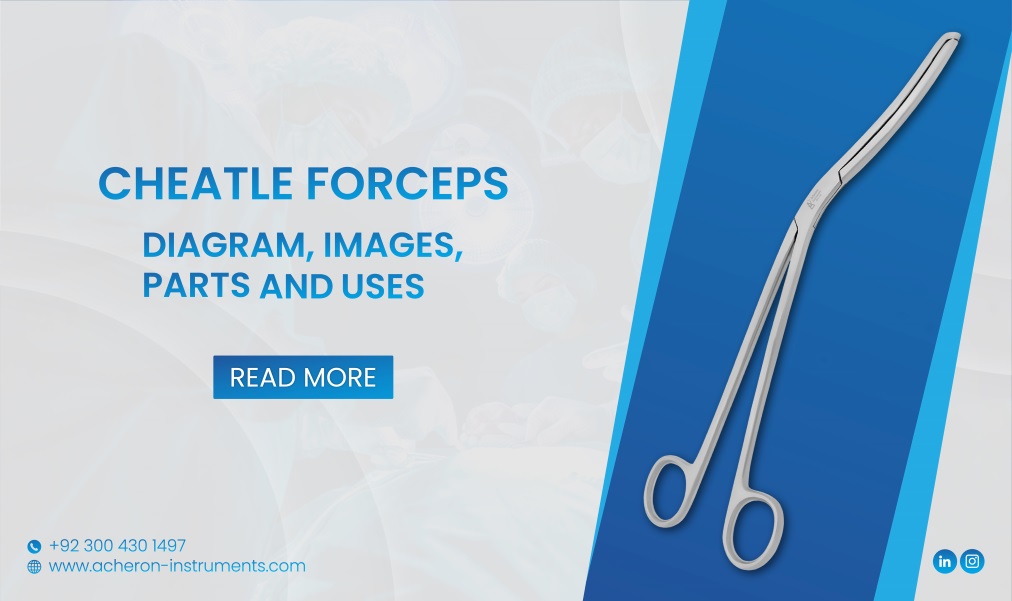Are you a healthcare professional in search of long straight haemostatic forceps for your hospital/ clinic or healthcare institute? Are you tired of spending millions of bucks on substandard surgical tools that wear off easily and make you furious? Fret not! We have got everything you need!
Surgical procedures are intricate in nature and require special attention and the use of proper tools. Not using the right tools can be challenging and risky at the same time. Why? Because they can put the patient at stake and also make the surgical procedure difficult or in some cases impossible to handle. Also, there is a high risk of major blood loss in most of the surgeries. To control such a sensitive situation and make the surgery efficient and successful, you are going to need haemostatic forceps.
Long straight haemoststic forceps would assist surgeons in clamping blood vessels in a deep surgical site. Which ones are must-haves for your operating room? Let’s find out!
Understanding Long Straight Hemostatic Forceps
Long straight haemostatic forceps have a straight design along with elongated jaws and shafts. They are designed in a unique way to clamp blood vessels. Also, they can help surgeons to grasp tissues and hold needles as well. Hemostatic forceps have a scissor-like finger ring design that is ergonomic in nature. The ergonomic design of this tool makes it easy to use and handle comfortably by surgeons. Moreover, these forceps are available in multiple sizes and designs to help surgeons in different surgical scenarios.
Some hemostatic forceps are used to control hemostasis in large blood vessels while others are used to clamp small blood vessels. These forceps provide better accessibility to multiple surgical scenarios. Let’s list down a few long straight haemostatic forceps that are commonly used in surgical procedures:
Kelly hemostatic forceps
Kelly forceps are one of the most commonly used hemostatic forceps that are suitable for medium and large blood vessels. They help surgeons during surgeries to achieve adequate hemostasis by clamping the lumen and controlling the blood flow. Kelly forceps feature tapered jaws that are great for reaching narrow surgical sites. These forceps have an ergonomic finger ring design that fits comfortably in the user’s hand. Moreover, the transverse serrations on the inner surface of its jaws provide incredible grip on the tissues and blood vessels. The ratchet mechanism of its jaws allows surgeons to apply the desired amount of pressure.

Crile hemostatic forceps
Surgeons use these hemostatic forceps in a wide range of surgical applications for their multiple surgical benefits. Surgeons prefer this tool when they need to clamp small arteries and blood vessels in different surgical scenarios. Additionally, this surgical instrument also becomes useful when there is a need to dispose of materials, sutures tissues, etc.
The design of these forceps is similar to the Kelly forceps but Crile forceps generally have a more finer profile. Crile forceps come with a ratchet mechanism but are mainly used for dealing with more delicate surgical procedures. Also, these forceps are available in a 1 x 2 toothed option for enhanced clamping action.
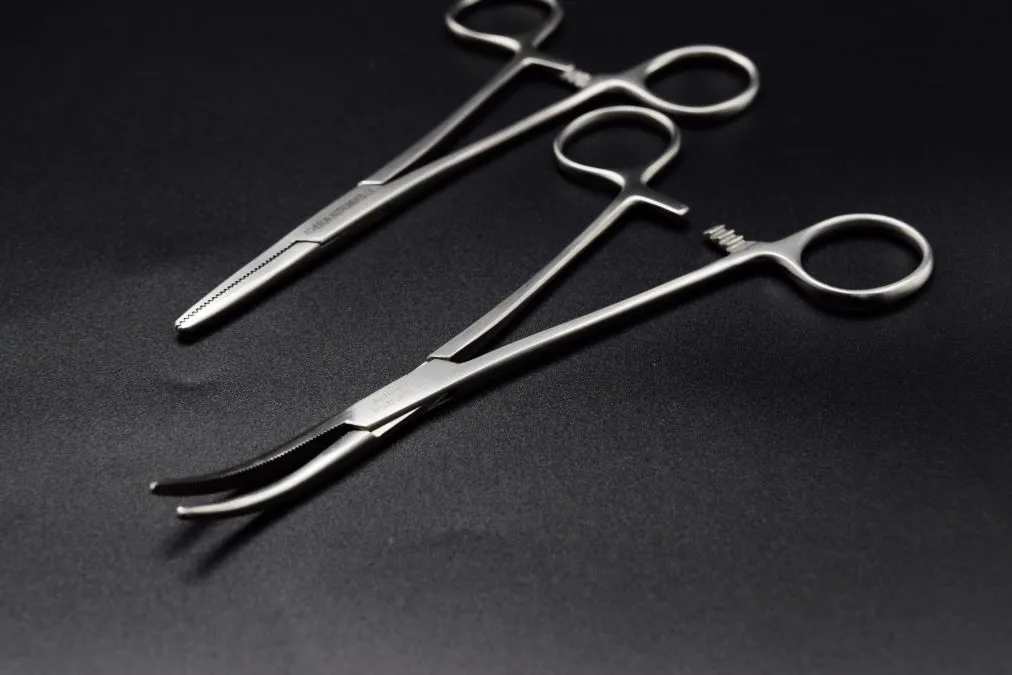
Halsted mosquito hemostatic forceps
These hemostatic forceps are useful to clamp small blood vessels or tissues. Also, they are known to provide a firm grip and control bleeding during surgeries. Healthcare practitioners make great use of this tool in multiple surgical scenarios because of their ability to manipulate tissues in confined areas. Moreover, this surgical tool has long, thin, and serrated jaws to provide a secure grip and also ensure minimal tissue trauma. Additionally, these forceps have a ratchet-locking mechanism that allows surgeons to self-lock the jaws.
Rochester Pean hemostatic forceps
Surgeons use this instrument in a variety of surgical procedures to control bleeding. These forceps provide a great grip that is often very important while controlling bleeding. Also, they hold tissues with a secure grip because they comprise serrations on their jaws that also prevent slippage. There are multiple sizes available for this tool to suit different surgical requirements. Additionally, they have a locking mechanism handle to hold the tissues/ blood vessels in the required place.
Rochester Carmalt hemostatic forceps
These forceps comprise wide and long jaws having longitudinal serrations. This incredible feature makes this tool ideal for grasping blood vessels without causing damage to the surrounding tissues in the operating area. Surgeons also this tool in deeper wounds to grasp and cut tissues. Also, this surgical instrument is used to clamp large blood vessels. Moreover, the ergonomically designed fingerring handles provide great comfort to the user and consequently prevent accidental slippage.
Kocher forceps
These long straight hemostatic forceps come with toothed tips and serrated jaws to firmly grasp the tissues. Also, surgeons make use of this tool to clamp large blood vessels. To control blood flow. Kocher forceps have a delicate design that prevents damage to the surrounding surgical area. Additionally, surgeons clamp the arteries with greater ease as these forceps come with a ratchet locking mechanism to self-lock the jaws. Surgeons use this tool greatly in gallbladder, intestinal, and thyroid procedures for their unique features.
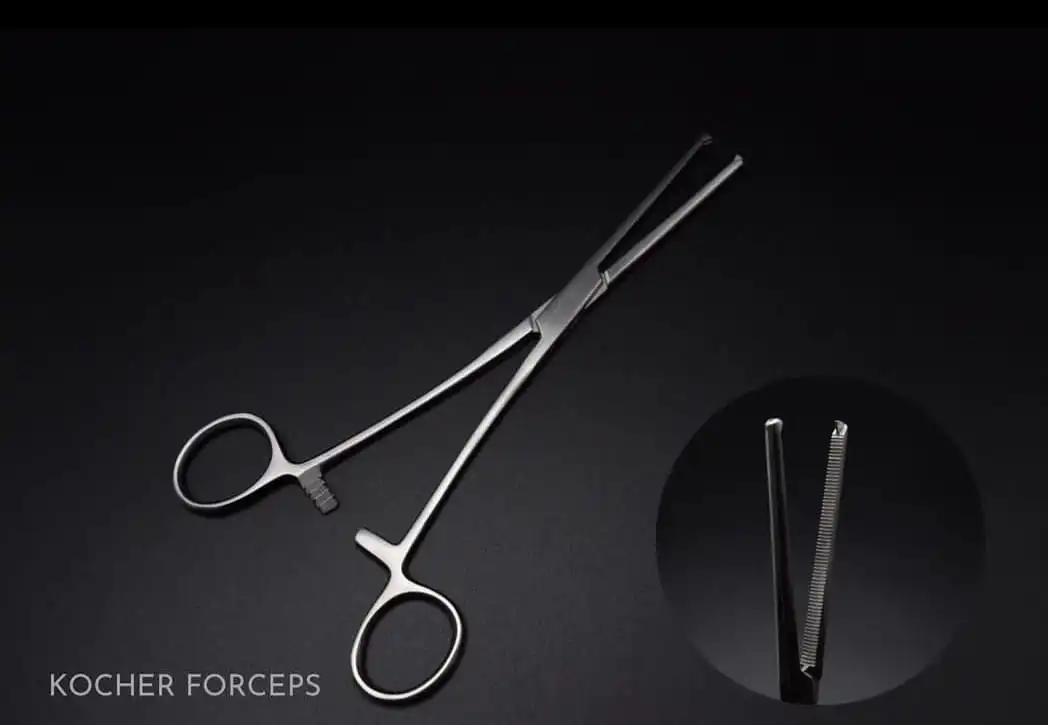
Rochester Ochsner hemostatic forceps
Surgeons use these forceps mainly to clamp off blood vessels to prevent blood loss in different surgical scenarios. These forceps are primarily used in orthopedic practices as they have a strong grasp. They feature serrated jaws along with 1x2 toothed tips that ensure enhanced grip on the tissues. Also, these forceps have pointed tips that ensure the best performance.
Why do surgeons need long straight haemostatic forceps?
As mentioned earlier, long straight hemostatic forceps are essential to assist surgeons in controlling blood flow. But the use of these forceps doesn’t end here. These tools are useful in many other scenarios of surgical practice for their incredible features. Here are some key reasons why surgeons need these forceps in the operating room:
- Hemostasis: The primary reason for using this tool is to adequately control hemostasis. Surgeons can clamp the blood vessels by temporarily interrupting the blood flow.
- Precision and control: By providing a controlled and secure grip on the tissues and blood vessels, these forceps enhance precision during surgeries. Surgeons can manipulate tissues without causing unnecessary damage to the surrounding structure.
- Maintain a clear surgical field: Hemostatic forceps contribute to maintaining a clear surgical view by controlling the bleeding effectively. A clear surgical site is crucial for surgeons to perform precise procedures, identify anatomical structures, and avoid complications.
- Accessibility in hard-to-reach spaces: In particular, long straight hemostatic forceps are designed to reach hard-to-reach areas. The long design of this tool comes with an extended reach to fulfill this requirement.
- Enhanced surgical efficiency: the use of hemostatic forceps contributes to enhancing surgical efficiency. Surgeons are able to manage bleeding efficiently which leads to smoother and successful surgical outcomes.
- Minimizing trauma: these forceps minimize trauma to the surrounding structures which is especially important in delicate surgeries.
The Role of Long Straight Haemostatic Forceps in Surgery:
From the discussion above, one thing is obvious, Operating room toolkits are incomplete without long straight haemostatic forceps. Surgeons rely on these forceps for numerous reasons. Furthermore, these forceps are useful in multiple surgical applications including:
General surgery: surgeons use this tool in general surgeries to clamp blood vessels and tissues
Microsurgery: in delicate surgical procedures where precision is paramount, surgeons use this tool for optimal precision
Cardiovascular surgery: This tool clamps blood vessels with greater accuracy in cardiovascular surgeries
Orthopedic surgery: Surgeons use this instrument to grasp tissues and clamp blood vessels in bone and surrounding tissues.
Gynecological procedures: For some surgeries including ovarian surgery, hysterectomy, and other types of reproductive surgeries where there is a risk of excessive blood loss, hemostatic forceps are very useful
ENT surgery: ENT surgeons utilize hemostatic forceps to control bleeding in procedures involving the ear, nose, and throat, such as sinus surgeries, adenoidectomy, and tonsillectomy.
Ophthalmic surgery: In eye surgeries, surgeons use these forceps to control bleeding and ensure a clear visual field during procedures such as retinal surgeries, glaucoma surgery, and cataract surgery.
Dental Surgery: Oral and maxillofacial surgeons may use hemostatic forceps during dental surgeries to facilitate precise surgical interventions and control bleeding.
Neurosurgery: Haemostatic forceps control bleeding and ensure a clear surgical field during neurosurgical procedures.
Want to get high-quality hemostatic forceps?
The above-mentioned detail is enough to emphasize the importance of hemostatic forceps. We have mentioned some frequently used long straight hemostatic forceps but the list doesn’t here. Also, all the above-mentioned forceps are also available in other variations including the curved ones to suit multiple surgical applications.
However, one point is a constant to consider! Always look for high-quality hemostatic forceps for optimal performance and quality assurance. We at Acheron Instruments offer high-quality surgical-grade stainless steel material surgical tools at the most reasonable prices. We have a wide range of surgical forceps, tweezer clamps, retractors, needle holders, and surgical scissors made from premium quality German stainless steel material. Our high-quality instruments are robust, durable, and reliable and last in your operating rooms for longer durations. Moreover, you can also order customized products from us at the best pricing.
FAQ’s
Do I need to sterilize Acheron Instruments' hemostatic forceps?
Yes, you need to sterilize your tools before using them for any surgical procedure.
Can I order customized bulk orders at Acheron Instruments?
Yes, we do offer customized bulk orders for our esteemed clients. We value our customers’ satisfaction and discuss everything in detail before taking any order.
Do we have other variations of forceps too?
Yes, apart from straight variations of forceps, we also offer other variations including curved, sharp/blunt, serrated, and non-serrated to suit multiple surgical approaches.
How to order from Acheron Instruments? Can I order bulk products?
Yes, we do take bulk orders across the globe! You can contact us via email or at the contact number given on our website. Our representative will assist you shortly with any queries. Or, request a quote


